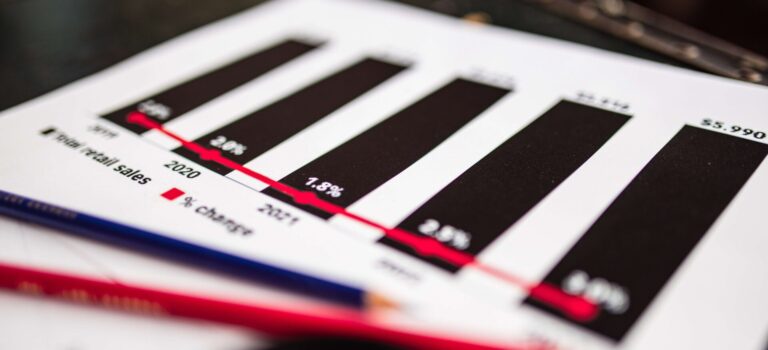The Investor Guide to Fidelity Funds for April 2024 is AVAILABLE NOW! April Data Files Are Posted Below Market Perspective: Commodities Surge Stifling Rate Cut Expectations Small-cap stocks extended their outperformance […]


The Investor Guide to Fidelity Funds for April 2024 is AVAILABLE NOW! April Data Files Are Posted Below Market Perspective: Commodities Surge Stifling Rate Cut Expectations Small-cap stocks extended their outperformance […]

The final trading week in March was truncated due to markets being closed for the Good Friday holiday . However, there were multiple news events released throughout the week with a few important pieces of information released on Friday morning.
On Monday, new home sales figures were released, and in the month of February, there were 662,000 such sales. This was lower than the expected 675,000 and lower than the January total of 664,000. A reduction in new home sales might indicate tightness in the housing markets, which may impact home prices as well as interest rates on new mortgages. All of these variables can have a impact on inflation as well as the overall health of the economy.
Multiple news reports came out on Tuesday with the CB Consumer Confidence report being the most important to traders. It came in at 104.7, which was lower than the expected 106.9 and lower than the 104.8 figure from February.
Core durable orders were up .5 percent while durable orders overall increased 1.4 percent on a monthly basis. Each figure came in higher than expected and represented a rebound from the previous month in which core durable orders were down .4 percent and durable orders overall were down 6.2 percent.
On Thursday, monthly pending home sales data was released, and it found that there was a 1.6 percent increase during February. This was much higher than the drop of 4.7 percent in January and was also higher than the expected gain of 1.4 percent prior to the news release. In addition, unemployment claims data was released Thursday morning, with 210,000 requests for benefits over the past seven days.
Final gross domestic product (GDP) figures for the final quarter of 2023 were made public on Thursday morning. For the final three months of 2023, the economy expanded by 3.4 percent compared to an expected 3.2 percent, which likely continues to bolster the idea that the Fed will be able to achieve a soft economic landing despite keeping interest rates elevated.
Finally, the revised University of Michigan consumer sentiment and inflation expectation figures were made available on Thursday morning. Consumer sentiment was at 79.4 percent compared to an initial 76.5 percent while inflation expectations dropped from 3 percent to 2.9 percent.
On Friday, the Core PCE Index came in at .3 percent on a monthly basis, which was what analysts expected prior to the release. It was also lower than the .5 percent figure reported in February. Later on Friday, Fed Chair Jerome Powell said that he was pleased that the report came in as expected. However, he cautioned that there was no rush to cut rates and that he wanted to see more data indicating that inflation was getting closer to 2 percent.
The S&P 500 was up 13.53 points to close at 5,254 for the week. It would make a weekly low of 5,204 on Tuesday before reversing and making a weekly high of 5,263 late on Friday before easing back to the closing price.
The Dow closed slightly lower this week losing 16.08 points to finish at 39,807. Like the S&P, this index made its weekly low on Tuesday of 39,292 before rebounding and making a high of 39,855 late on Friday.
Finally, the Nasdaq also finished slightly lower this week falling 18.07 points to close at 16,379. On Wednesday, the market made its weekly low of 16,298 while the weekly high was put in place on Tuesday when it hit 16,461.
This week will see the release of the nonfarm payroll (NFP) report for March on Friday. The Job Openings and Labor Turnover Survey (JOLTS) report will be issued on Tuesday. The ADP version of the NFP report will be released on Wednesday. Jerome Powell is also expected to give a speech on Wednesday, which the markets will follow closely.

The March Issue of the ETF Investor Guide is AVAILABLE NOW! Links to the March Data Files have been posted below. Market Perspective: Solid Economic Growth Remains on Pace Rising […]

On Wednesday the Federal Reserve announced its March rate decision. As expected, the Fed kept interest rates steady in a range between 5.25 percent and 5.5 percent. Of course, the rate announcement itself wasn’t what the market was eager to hear. Instead, it wanted to learn from Fed Chair Jerome Powell and hear what he had to say about the future of interest rate cuts. According to Powell, the Fed is still planning on cutting rates three times in 2024, which would see the prime rate reduced by 75 basis points over the next 8 months.
However, what likely stood out to most market participants was what he had to say about economic reports from the previous two months. Essentially, he downplayed them during his press conference and indicated that there was confidence that inflation rates would head back to 2 percent in a timely manner.
Of course, the Fed announcement wasn’t the only important news. On Thursday, unemployment benefit claim figures were released and revealed that 210,000 requests were made for benefits in the past seven days. This was slightly lower than the projected 212,000.
In addition, Flash Services PMI and Flash Manufacturing PMI data was made available. The Flash Services PMI came in at 51.7 percent compared to a projected 52 percent while the Flash Manufacturing PMI came in at 52.5 percent compared to a projected 51.8 percent. These figures suggest that both the services and manufacturing sectors are growing albeit slower than expected.
Finally, it was revealed that 4.38 million existing homes were sold throughout the country in February. This was compared to an expected 3.95 million and was significantly higher than last month’s reading.
The S&P 500 was up 1.33 percent this week to close at 5,234. On Tuesday, the market made its low of the week at 5,136 before shooting up to a high of 5,255 on Thursday afternoon. For the month, the S&P is up 2.58 percent and is up 10.36 percent year-to-date.
The Nasdaq finished higher this week up 1.27 percent to close at 16,428. The Nasdaq would trade mostly sideways prior to Wednesday’s news announcement before shooting up to a weekly high of 16,344 by Thursday’s open. The weekly low was 15,972, which occurred on Tuesday morning. For the year, the Nasdaq has increased 11.26 percent
The Dow Jones Industrial Average increased 1.71 percent during the past five trading days to finish at 39,475. On Tuesday, the market made its low of the week at 38,787 while it would make a high of 39,858 on Thursday. The index has returned 4.67 percent in 2024.
There were several announcements made overseas that could have an impact on American financial policy going forward. Late Monday, the Bank of Japan (BOJ) announced that it would increase its key interest rate to .1 percent from negative .1 percent. Also on Monday, Australia’s central bank announced that it would keep its key interest rate at 4.35 percent.
The Bank of Canada (BOC) announced on Tuesday that inflation came in lower than expected on both an annualized and monthly basis. Switzerland’s central bank on Thursday cut the country’s interest rate from 1.75 percent to 1.5 percent, which may portend the beginning of a rate cut cycle throughout the globe.
This upcoming trading week will be truncated by the Good Friday holiday. The CB Consumer Confidence report will be released Tuesday. On Wednesday night, FOMC member Waller will be speaking. Thursday sees the release of monthly pending home sales figures. The revised University of Michigan Consumer Sentiment report will also be issued on Thursday along with unemployment claims and final GDP numbers for the fourth quarter of 2023.

The Investor Guide to Vanguard Funds for March is AVAILABLE NOW! Links to the March data files are posted below. Market Perspective: Inflation Concerns Persist as Stocks Hit New Records […]